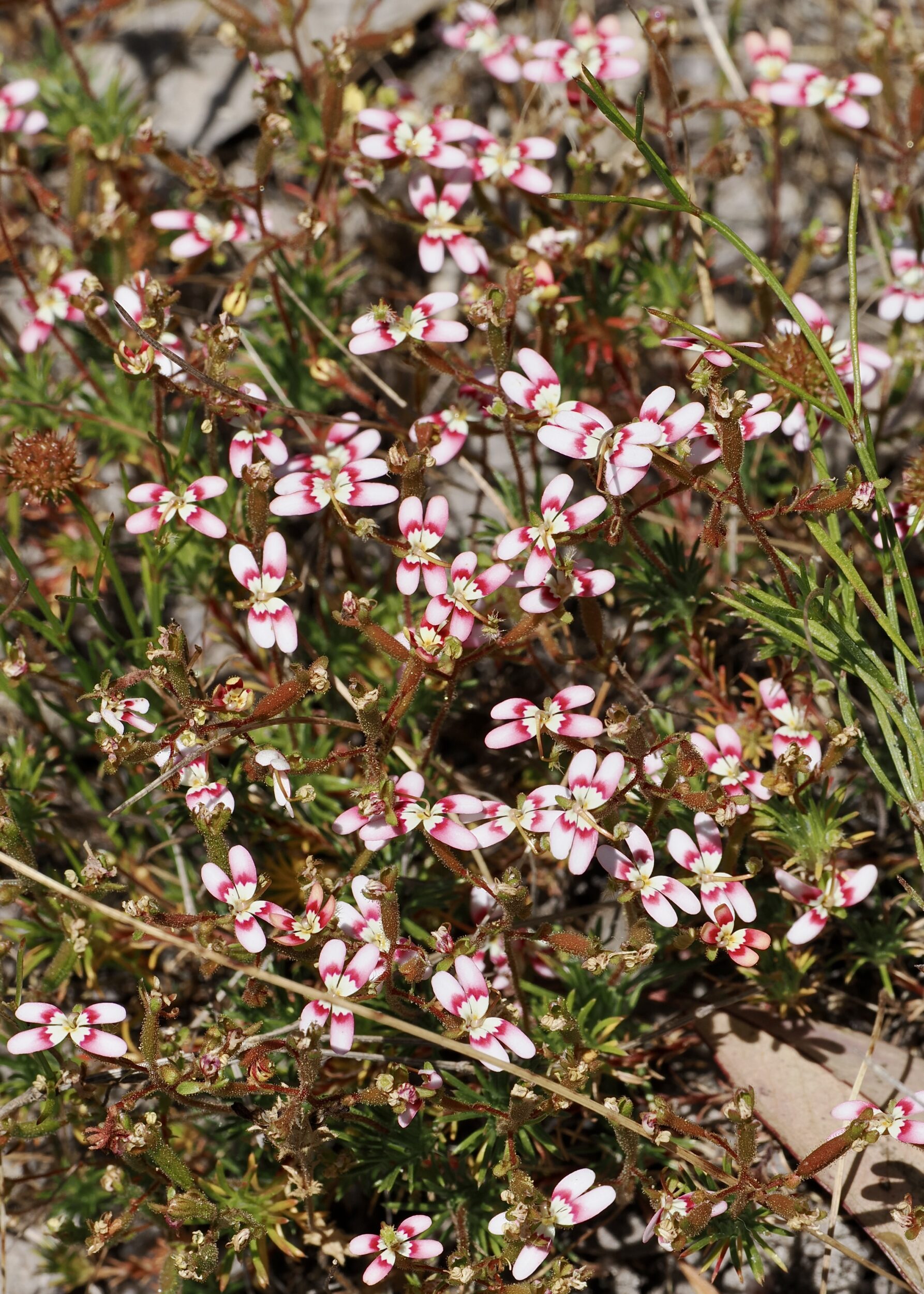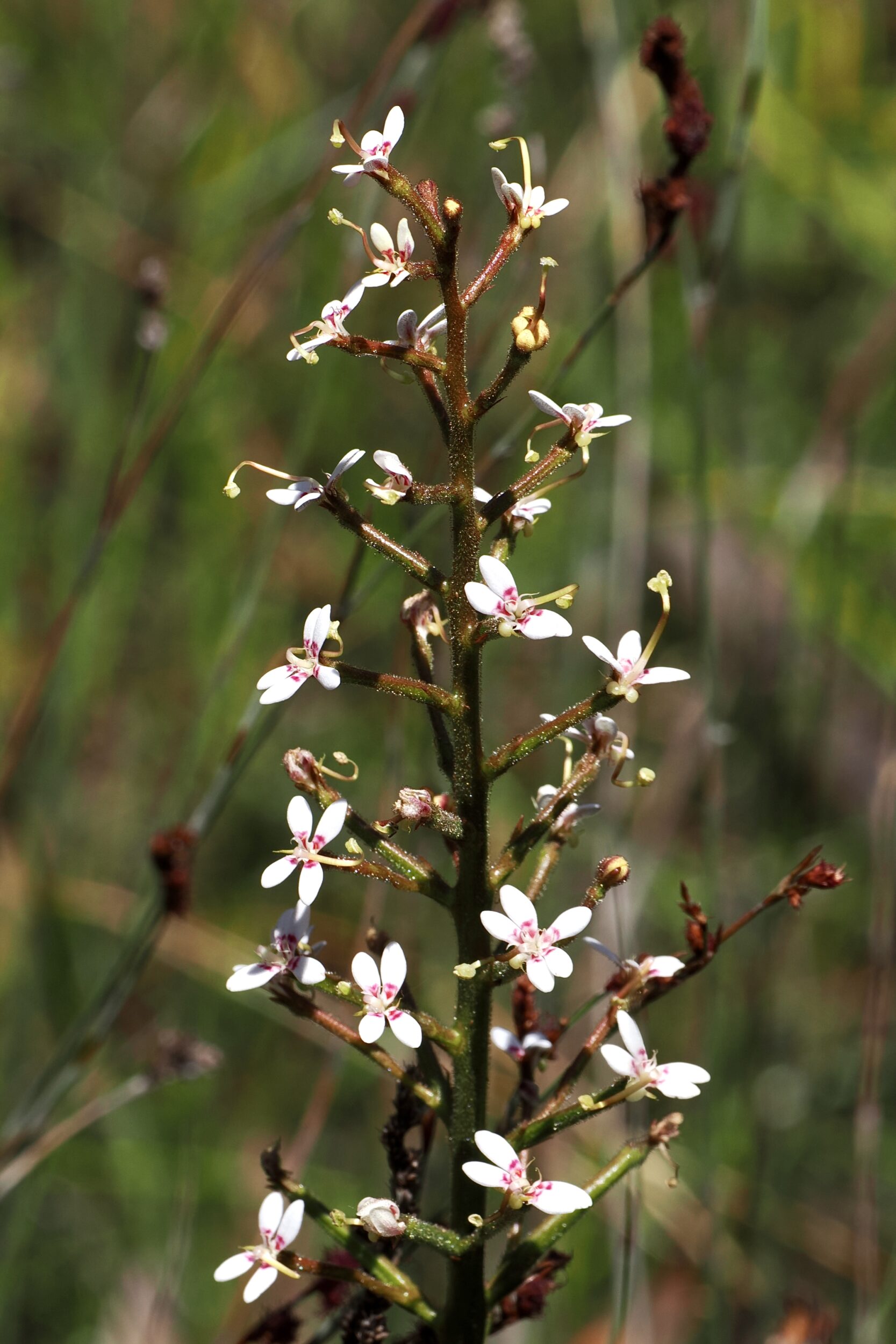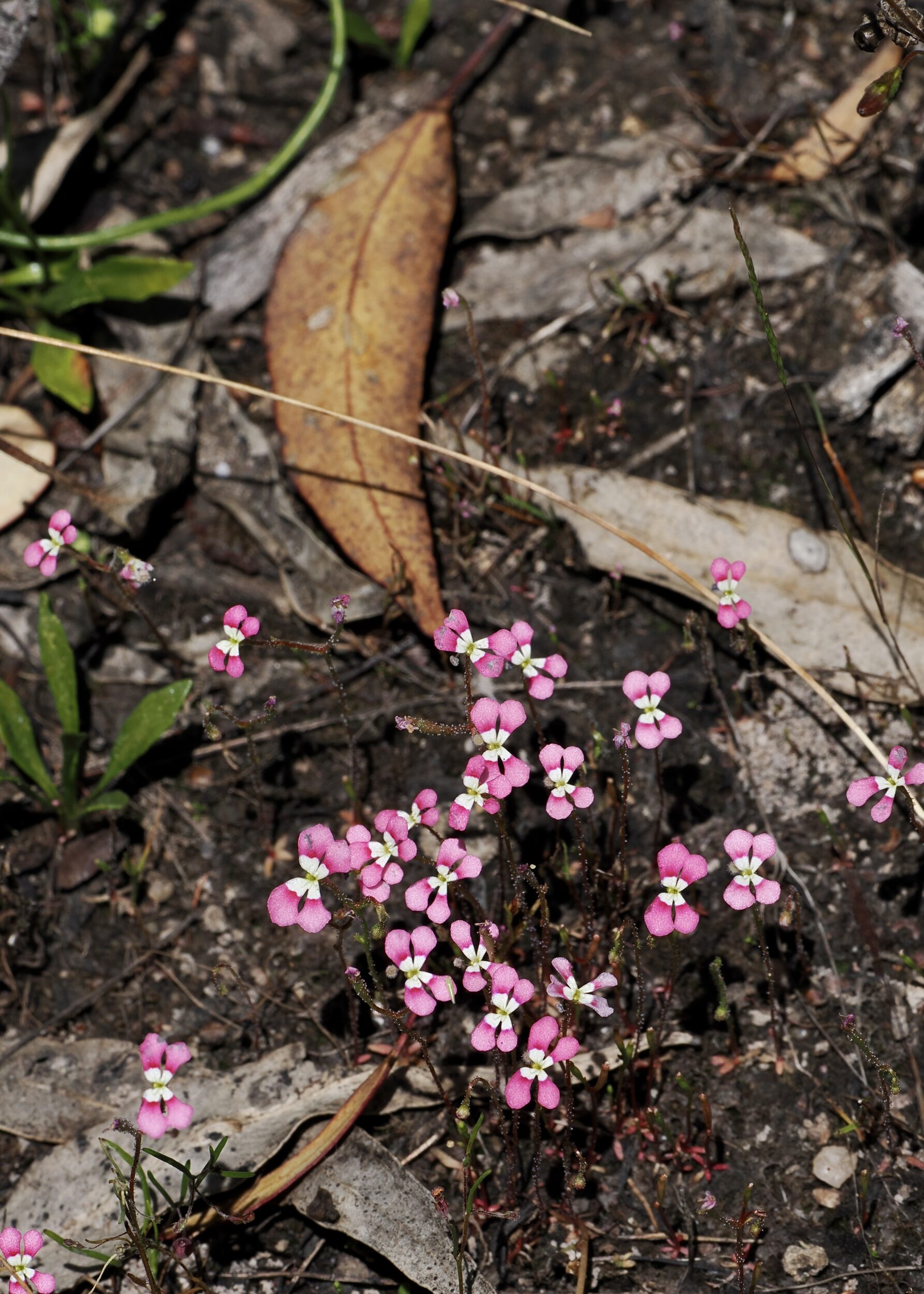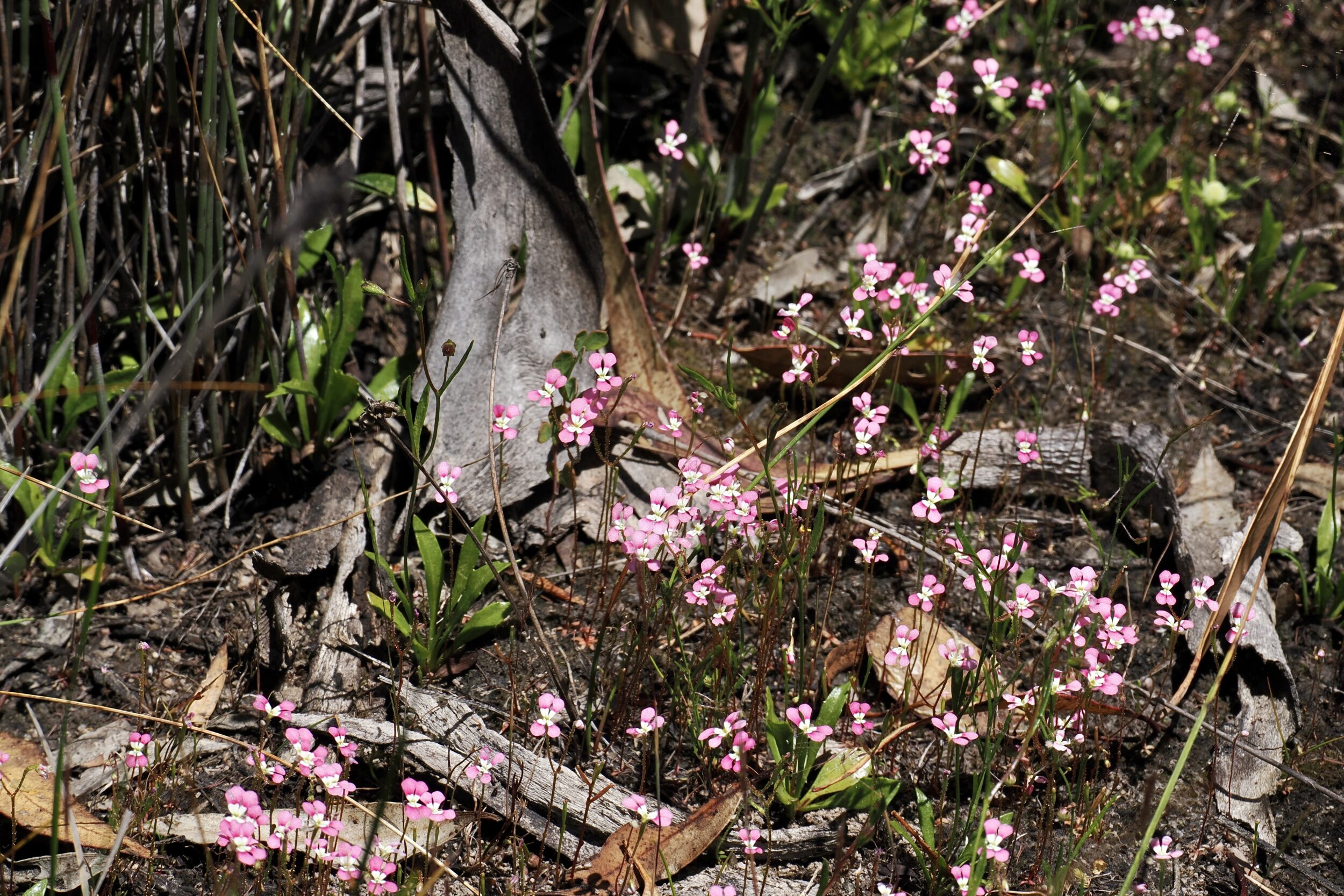This post’s heroes belong to the genus Stylidium.
They are generally known as “trigger plants”.
Almost all of the circa 300 trigger plant species call Australia home, exclusively; Stylidium is this country’s fifth-largest flora genus.
Around half of them are endemic to Australia’s “wild west”; the majority of those species occur only in specific parts of WA’s southwest.
On a warm day some species are much faster “on the draw” than ever was Wyatt Earp…or any other gunslinger in America’s “Wild West”.
The fastest Stylidium “trigger” can complete its “attack” on an insect in as little as 15 milliseconds.

If you zoom in on the central part of the above image, you should be able to see that each of its flowers has its own “trigger”.
The triggers are even easier to see in the photo below.
Insects unintentionally activate them; many bushwalking humans enjoy doing so, intentionally.

All photos in this post were taken in or near to the almost dry bed of a very small, very occasional watercourse – a “winter creek” in wandoo woodland, circa 100 kilometres southeast of Perth’s CBD.
Their general appearance is highly diverse, but all trigger plants share the same, distinctive reproductive apparatus and technique:
Pollination is achieved through the use of the sensitive “trigger”, which comprises the male and female reproductive organs fused into a floral column that snaps forward quickly in response to touch, harmlessly covering the insect in pollen.
This post’s italicised quotations are from the relevant Wikipedia entry.
The change in pressure when a pollinating insect lands on a Stylidium flower causes a physiological change in the column turgor pressure by way of an action potential, sending the column quickly flying toward the insect. Upon impact, the insect will be covered in pollen and stunned, but not harmed. Because the column comprises the fused male and female reproductive organs of the flower, the stamen and stigma take turns in dominating the function of the column—the anthers develop first and then are pushed aside by the developing stigma. This delayed development of the stigma prevents self-pollination and ensures that cross pollination will occur between individuals of a population. Different species have evolved the trigger mechanism in different locations, with some attacking the pollinating insect from above and others from below (a “punch in the gut” to the insect).
After firing, the column resets to its original position in anywhere from a few minutes to a half hour, depending on temperature and species-specific qualities. The column is able to fire many times before it no longer responds to stimuli.
Click here to read and see all of the well-illustrated Wikipedia entry.
Excellent as that entry is, the “gold standard” article about trigger plants was written long before Wikipedia and the internet came into existence.
Rica Erickson (1908-2009) was a prodigious West Australian (“amateur” but expert) naturalist, botanical artist, educator and author.
Erickson’s An Introduction to Trigger Plants was first published in December 1961.
In December 2023 it is still worth reading, but be aware that the “known species count” has almost doubled since 1961.
Click this.

